Comprehensive Guide to the Top 7 Temples in Bali
Bali, often referred to as “the Island of the Gods,” is deeply rooted in spirituality. Temples are present in every village and play a vital role in Balinese culture, with estimates suggesting there are over 20,000 temples across the island. This guide features the seven most notable temples, renowned for their architectural beauty and historical importance. Some, like Tanah Lot, are steeped in fascinating mythology. If you’re planning a visit to Bali, exploring these temples will offer valuable insight into the spiritual lives of the local populace.
Continue reading for an in-depth guide to the top 7 temples in Bali, including information on their locations, entrance fees, opening hours, and the best times to visit
To navigate Bali, you can hire a car with a driver (who often doubles as a guide), use ride-sharing apps like Grab and Gojek, or rent a scooter. Renting a scooter is a convenient option for daily excursions to these temples. However, be cautious and only ride a scooter if you have ample experience, as the roads can be challenging.
Note: This article is written by Kanu from the travel blog My Lost Camel.
Further Reading About Bali on Breathedreamgo
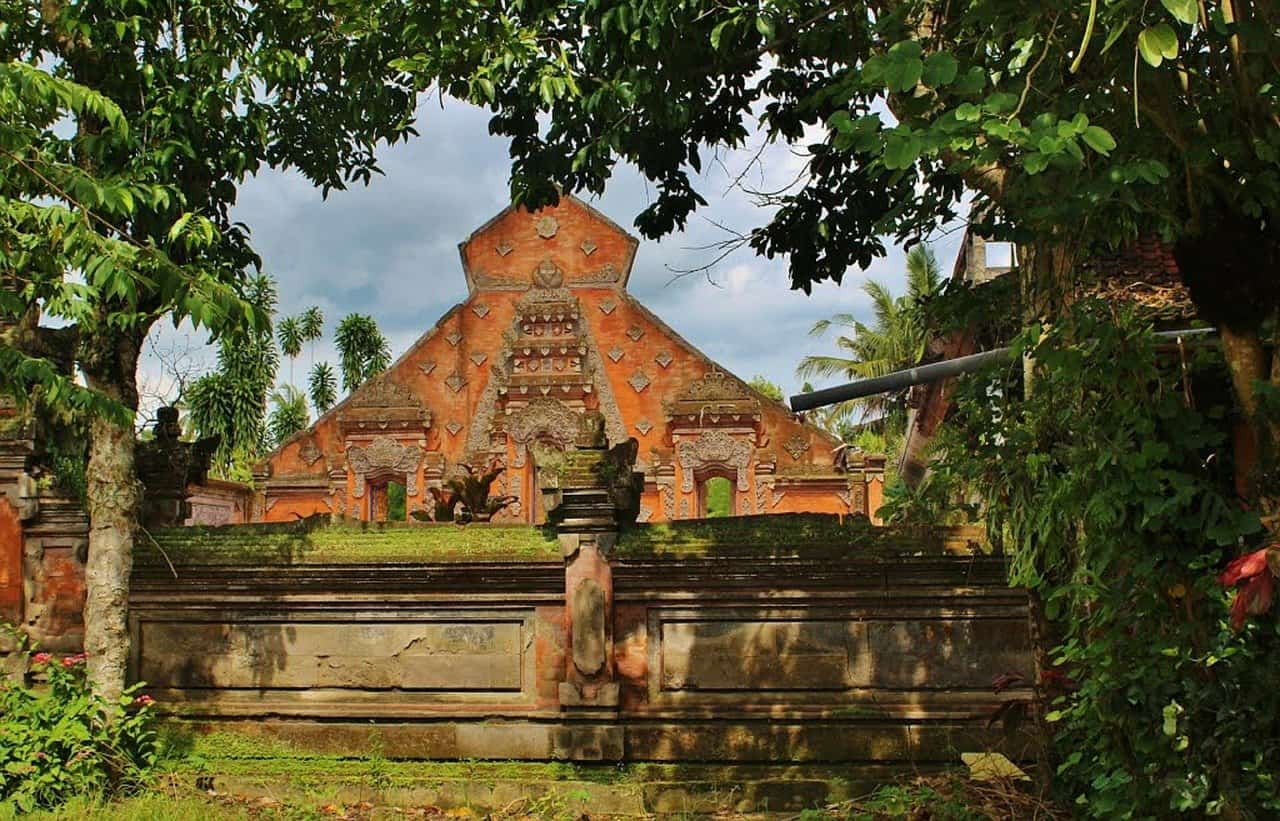
Architecture of Temples in Bali
In Bali, a Hindu temple is referred to as a “pura.” These temples are typically open-air structures providing a serene worship environment. Visitors enter through beautifully crafted gates that often lack doors. A notable feature is the expansive outer courtyards, which host gatherings, performances, and food stalls during festivals.
The inner sanctum, known as the meru, consists of square-shaped buildings with brick foundations and tiered pagoda-style roofs. The number of tiers symbolizes the deity’s rank and is always an odd number.
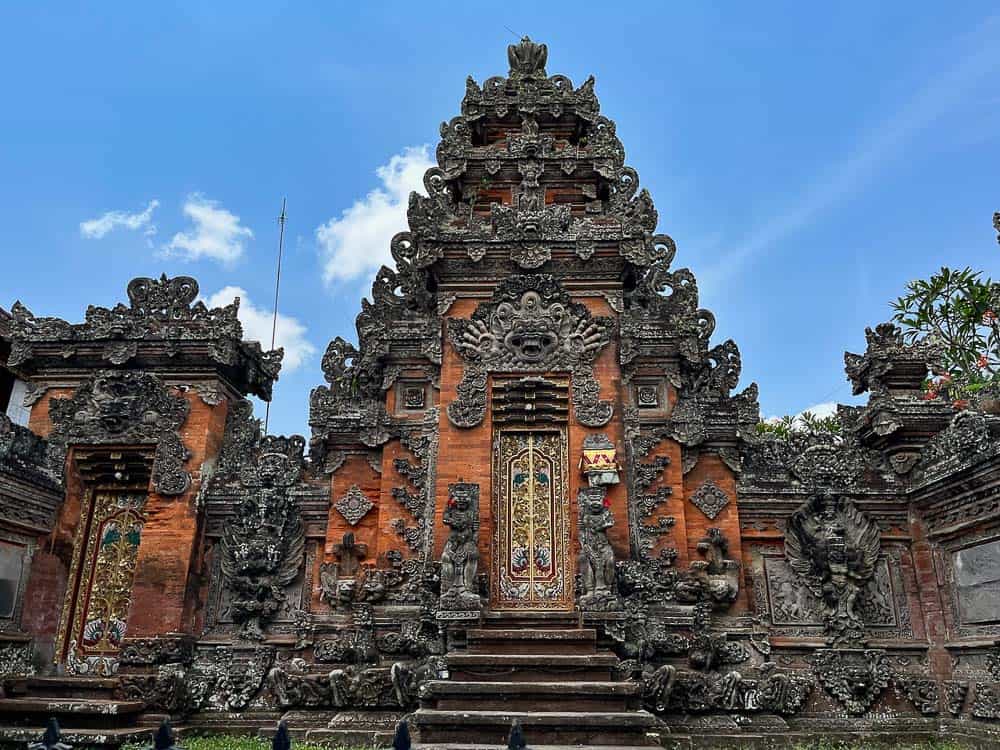
Most Famous Temples in Bali
- Uluwatu Temple
- Ulun Danu Beratan
- Tanah Lot
- Tirta Empul
- Pura Lempuyang
- Goa Gajah
- Gunung Kawi
Uluwatu Temple
Uluwatu Temple is a stunning cliffside temple located at the western end of Uluwatu, approximately 70 meters above the crashing waves. Locally known as Pura Luhur Uluwatu, the temple is famous for its mesmerizing sunset views, akin to those found at Tanah Lot. The sprawling temple complex boasts impressive architecture, numerous worship areas, and breathtaking scenic views.
Every evening at 6 PM, a Kecak dance performance takes place in the amphitheater, inspired by the Ramayana, a significant Hindu epic, with a stunning sunset as the backdrop. Tickets for this performance are available for purchase at the theater just prior to the show.
Entry Fee and Visiting Hours:
To enter Uluwatu Temple, adults pay an entrance fee of IDR 30,000, while children pay IDR 15,000. The temple is open from 9 AM to 7 PM. The Kecak dance tickets come at a cost of IDR 300,000.
Best Time to Visit:
The best time to arrive at Uluwatu Temple is around an hour before sunset, allowing you sufficient time to explore the temple and enjoy the performance.
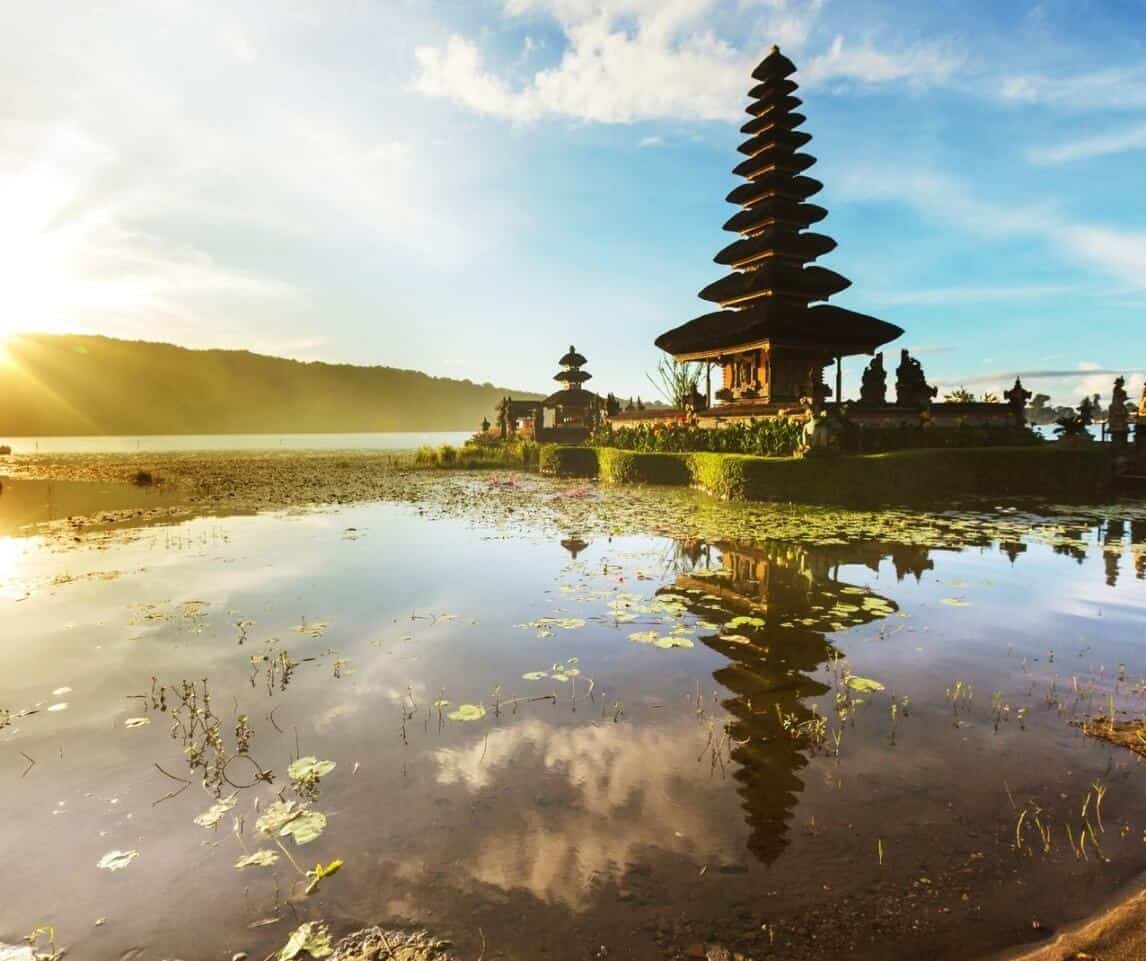
Ulun Danu Beratan
Situated on the western shore of Lake Beratan in Bedugul, Ulun Danu Beratan Temple, also known as the “Floating Temple,” was built during the 17th century to honor the Hindu trinity: Brahma, Vishnu, and Shiva, along with Dewi Danu, the goddess of the lake.
Thanks to its scenic surroundings and moderate climate, the temple and the lake attract numerous visitors during the hot summer months. The entire Bedugul area is a favored getaway for those from the more urban regions in southern Bali.
Entry Fee and Visiting Hours:
Ulun Danu Beratan Temple operates daily from 7 AM to 7 PM, with an entrance fee of IDR 75,000 for adults and IDR 50,000 for children aged 5 to 11.
Best Time to Visit:
The ideal time to visit Ulun Danu Beratan Temple is early in the morning when visibility is clear, making it perfect for photography.
Tanah Lot
Pura Tanah Lot is a renowned Hindu temple located on a rocky outcrop off the coast of Bali, near Canggu. The scenic site is of immense cultural significance.
The temple sits on a rock surrounded by the sea, accessible only during low tide. At high tide, the area between the rock and the shore is submerged. Visitors can walk along the ocean floor at low tide to explore the intriguing structures.
The temple complex features several minor shrines, restaurants, and shops selling assorted souvenirs and local craftsmanship. There are adjacent smaller temples that visitors can also access.
Entry Fee and Visiting Hours:
Indonesian citizens can enter for IDR 20,000, while foreign visitors pay IDR 60,000. Tanah Lot Temple is open daily from 7 AM to 7 PM.
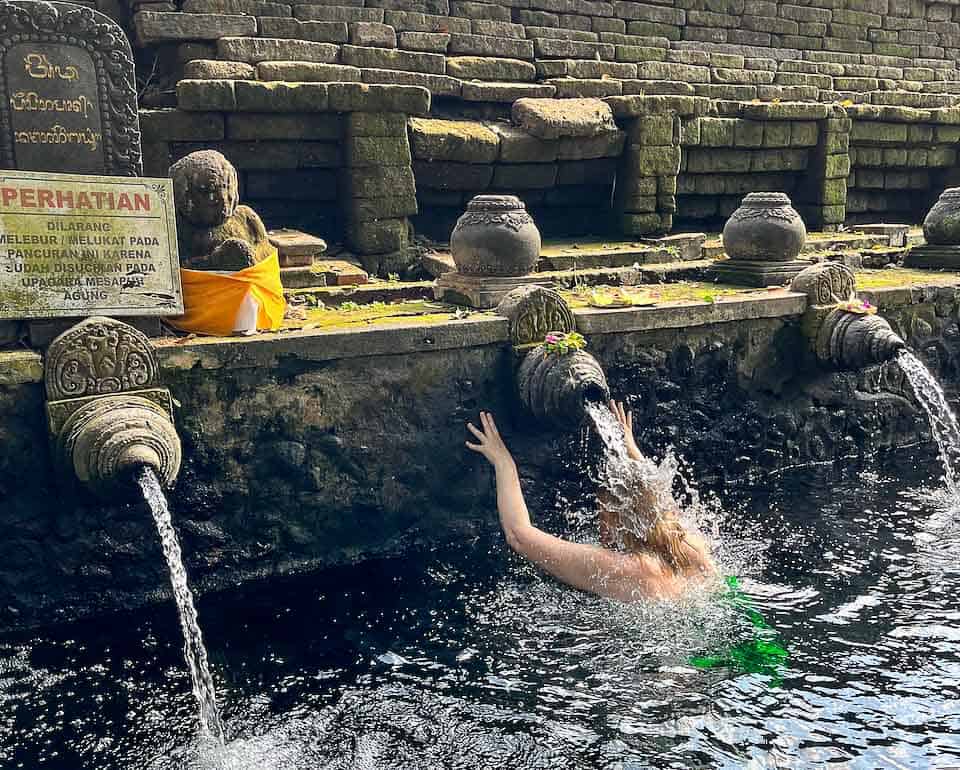
Pura Tirta Empul
Pura Tirta Empul, or the Water Temple, is famed for its sacred spring water fountain, where visitors can participate in a ceremonial bathing ritual and seek the blessings of the priests. The temple complex also features a large pond filled with koi fish, which you can feed, as well as a vibrant local market where you can purchase authentic souvenirs. This complex is one of Bali’s most exquisite and intricate temple settings.
Located near Ubud and adjacent to the picturesque rice fields of Tegalalang, it’s easy to combine a visit to Tirta Empul with a trip to the rice terraces. The nearby Gunung Kawi shrine complex enhances the experience. You might also want to visit the tranquil Suwat Waterfall on your way back—a hidden gem of Bali.
Entry Fee and Visiting Hours:
The entrance fee is IDR 50,000, and the temple is open daily from 9 AM to 5 PM.
Lempuyang Temple
The Lempuyang Temple complex, located at the base of Mount Lempuyang in East Bali, is one of the island’s most revered and historic temples. It is alternatively known as Pulupulan Temple or Pulupulan Luhur. The main temple stands alongside various smaller temples within the larger complex.
The main entrance is marked by a painted white candi bentar split gate, leading into the outer area, jaba pisan. The central sanctum, jawa tengah, is flanked by three ornate Padksaura Portals. Mythical Naga figures adorn the stairways leading to all three portals.
The innermost courtyard, jero, is the most sanctified area of the temple, featuring several Meru towers and pelinggih shrines dedicated to a variety of deities and local spirits.
Entry Fee and Visiting Hours:
The Lempuyang Temple charges an entrance fee of IDR 55,000, a parking fee of IDR 5,000, and a mandatory shuttle bus from the parking area for IDR 45,000. The temple is open from 6 AM to 7 PM, with shuttle buses beginning service at 5:30 AM.
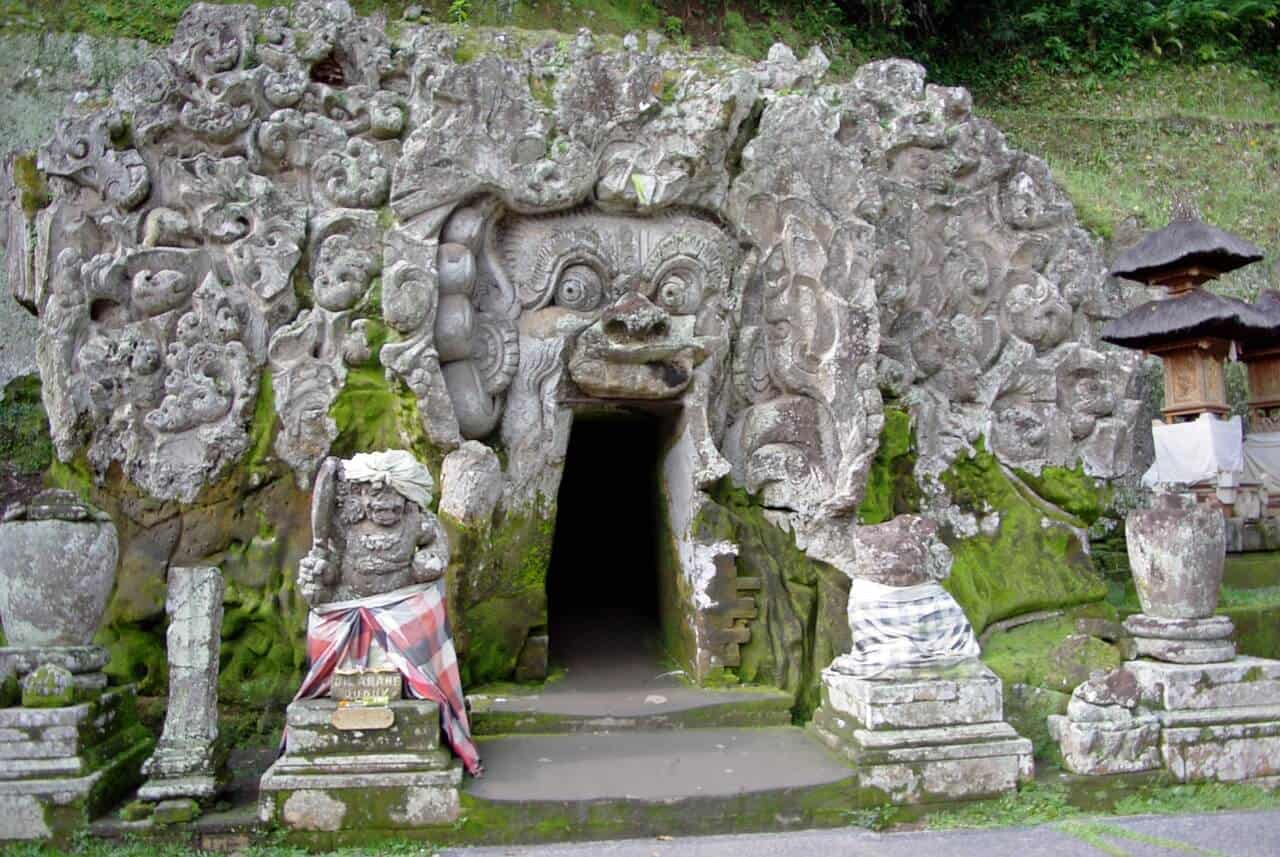
Goa Gajah
Goa Gajah, or “Elephant Cave,” is an archaeological site with a history dating back to the 9th century. Created to resemble an elephant, the entrance is etched with stunning stone carvings of both Hindu and Buddhist deities.
The cave features symbols such as lingam and yoni, representing Shiva, as well as depictions of Ganesha. Along the adjacent river, visitors can find impressive carvings of stupas and other Buddhist motifs. The temple’s recognition stems from its representation of diverse religious influences.
The site is conveniently located near Sumampan Waterfall, another hidden gem worth visiting. A half-day trip from Ubud can include both Goa Gajah and the waterfall for a perfect day out.
Entry Fee and Visiting Hours:
Goa Gajah is open daily from 8 AM to 4:30 PM, with an entrance fee of approximately IDR 15,000.
Gunung Kawi
Gunung Kawi is a historical temple located in Tampaksiring, Bali, dating back to the 11th century under the reign of King Anak Wungsu of the Udayana Dynasty. This site is significant for its historical and cultural context.
The temple complex is known for its distinct rock-cut shrines situated in a river valley. Gunung Kawi features ten Candi (shrines), believed to honor King Anak Wungsu and his queens. Each sanctuary is around seven meters tall and showcases intricate carvings of divine figures and floral patterns.
To reach the temple complex, visitors must descend a lengthy staircase framed by rice fields, which may take a couple of hours to fully explore.
Entry Fee and Visiting Hours:
Gunung Kawi is open daily from 8 AM to 6 PM, and the entrance fee is IDR 50,000.

Summary
These temples represent some of the most remarkable sites to explore in Bali, offering an enriching experience on your journey through this mystical island. The temples serve as vibrant centers for religious celebrations and are integral to the local community’s day-to-day lives, deserving of reverence and respect. Visiting these temples not only connects you with local spirituality but also provides a deeper appreciation for Balinese culture.
If you found this post enjoyable, consider signing up for updates in the sidebar and following Breathedreamgo on various social media platforms, including Instagram, Facebook, Pinterest, and Twitter. Thank you!



